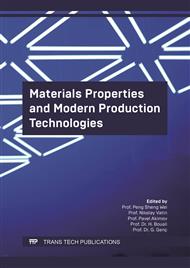p.43
p.55
p.61
p.67
p.73
p.79
p.87
p.93
p.101
Technology of Preparing Ceramsite from Electric Ceramic Waste
Abstract:
With the popularization of electricity, the use of electric porcelain is becoming more and more extensive, but in the process of production, the waste of electric porcelain continues to accumulate and increase, which not only pollutes the environment but also affects the normal life of human beings. Therefore, it is urgent to deal with these electric porcelain wastes. In this paper, the electric ceramic waste is used as the main raw material, and starch and kaolin are added to optimize the formula to prepare porous ceramsite. The effects of the content of electrical ceramic waste, sintering temperature and holding time on the properties of porous ceramsite were studied. After research, the results show that with the increase of waste content, the porosity and water absorption first decrease and then increase, while the compressive strength first increases and then decreases. With the increase of the sintering temperature, the porosity and the water absorption rate decrease continuously at the beginning, and the compressive strength increases continuously at the beginning, but when the sintering temperature increases continuously, there will be a turning point or a flattening point. With the continuous extension of the holding time, the water absorption and porosity continue to increase, while the compressive strength continues to decrease, but the overall change is small. The optimization can be found that when the waste content is 75%, the sintering temperature is 1200 °C, and the holding time is 30 min, the prepared porous ceramsite has the best performance. Its water absorption rate: 13.87%, porosity: 27.52%, compressive strength: 20.06MPa.
Info:
Periodical:
Pages:
73-78
Citation:
Online since:
July 2022
Authors:
Keywords:
Price:
Сopyright:
© 2022 Trans Tech Publications Ltd. All Rights Reserved
Share:
Citation:



